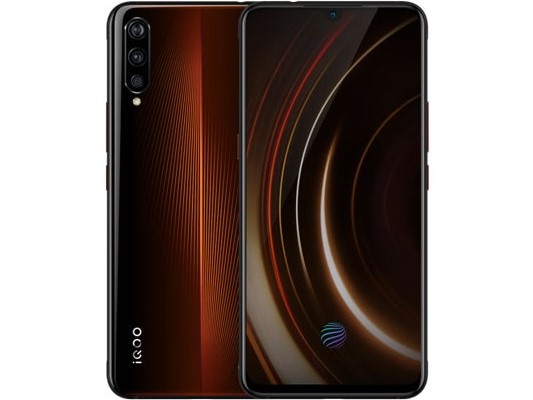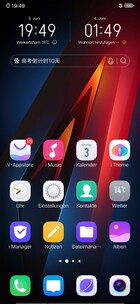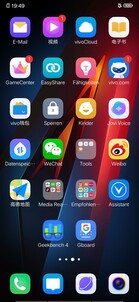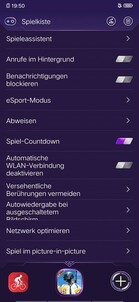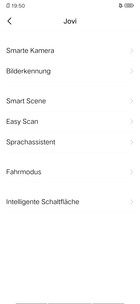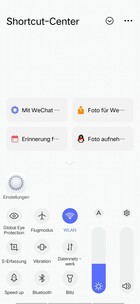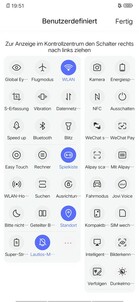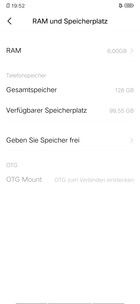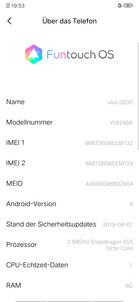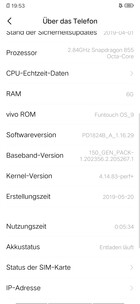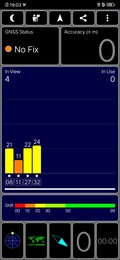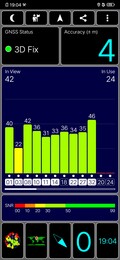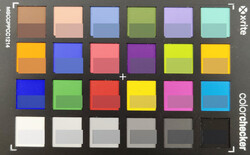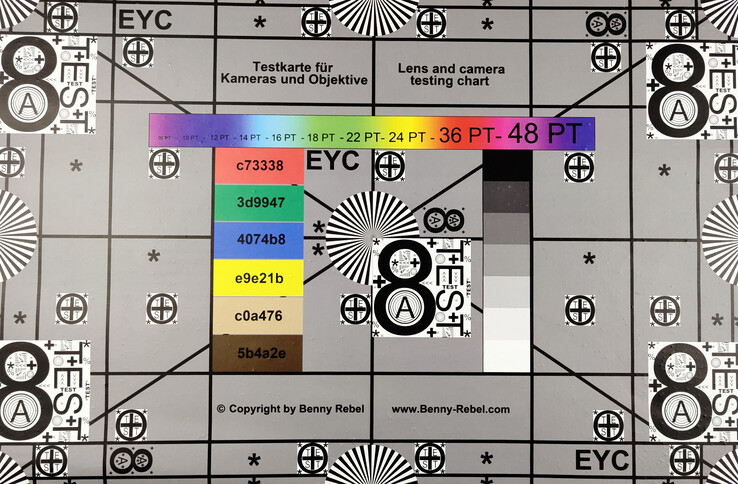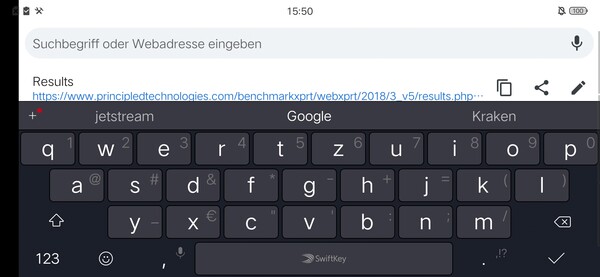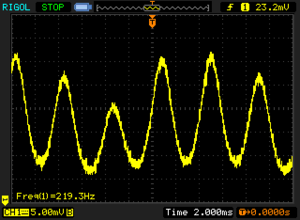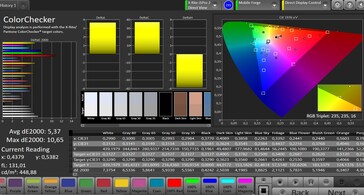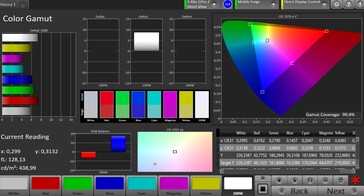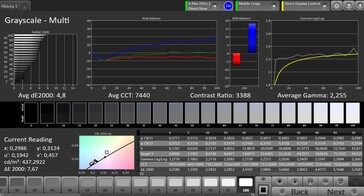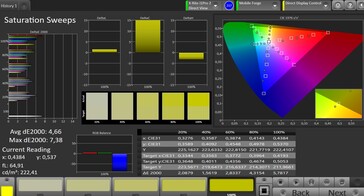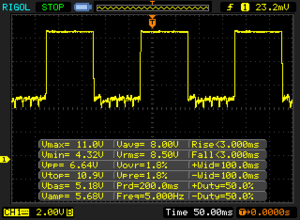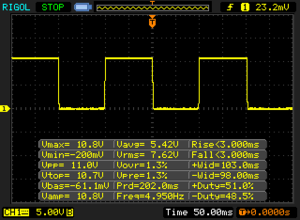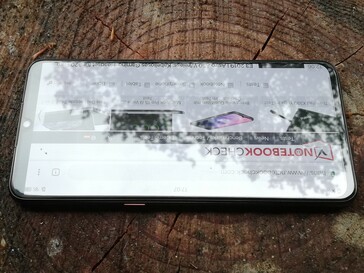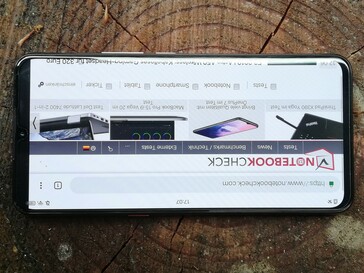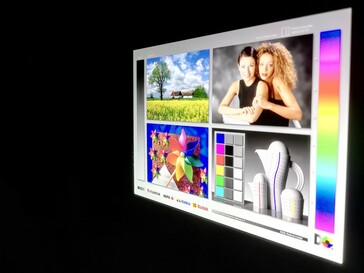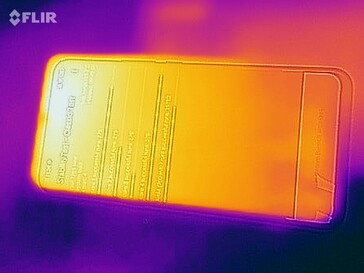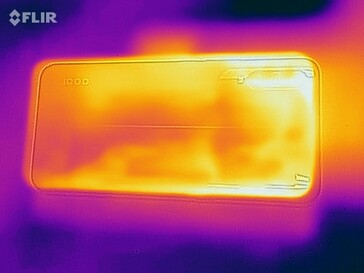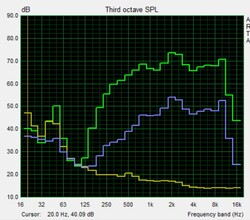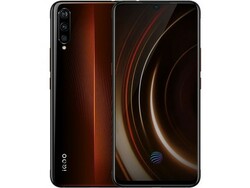Vivo IQOO Smartphone Review
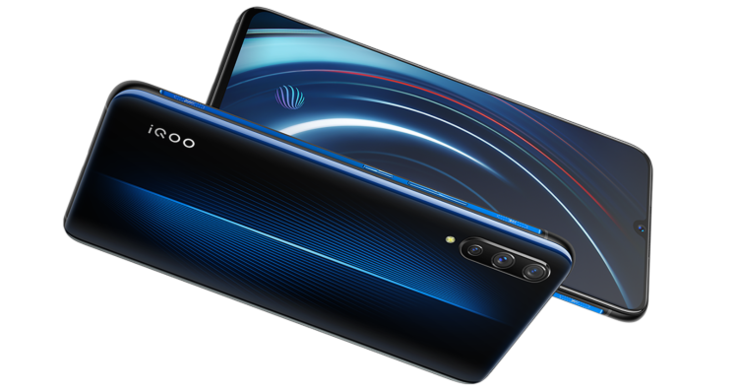
The IQOO is only the third Vivo device to enter our offices after the NEX Ultimate and the NEX Dual. While Vivo strove for as high of a screen-to-body ratio as possible with those two devices, it has focussed its efforts on creating a gaming smartphone with the IQOO.
The company has previously equipped its devices with large batteries along with powerful hardware, and it appears to have done the same with the IQOO. The company has included a 4,000 mAh battery and the latest flagship Qualcomm Snapdragon chipset, which it has complemented with 6 GB of RAM and 128 GB of UFS 2.1 flash storage. Moreover, it has incorporated an in-screen fingerprint sensor, touch-sensitive shoulder buttons and three rear-facing cameras.
Most gaming smartphones like the ASUS ROG Phone and Razer Phone 2 are almost twice the price of the IQOO and so would be unfair devices against which to compare our review unit. Instead, we shall compare the IQOO against comparably priced devices like the Google Pixel 3 XL, Nokia 8.1, Sony Xperia 10 Plus and the Xiaomi Mi 9. You can add smartphones that we have already tested to our comparison tables should you wish to do so too.
Case
The IQOO is a metal and glass sandwich like many modern smartphones. Vivo has adorned the long sides of the metal frame with company branding and accenting colours, along with a gradient finish on the back glass. The centre of the glass may look like the apex of the gradient, but it is a notification LED strip, which is a nice touch. Vivo currently sells the IQOO in three colours: Black, Optic Blue and Lava Orange.
The IQOO looks rather understated for a gaming smartphone. Vivo has opted for curved corners rather than the more aggressive gaming smartphone designs of the ASUS ROG Phone and the Xiaomi Black Shark. Our review unit is well-built and showed no structural weaknesses during our tests.
The IQOO is a hefty beast though, despite not looking like a typical gaming smartphone. Our review unit weighs a whopping 190 g and is rather thick too at 8.5 mm. Its 91% screen-to-body-ratio keeps the IQOO rather narrow though.
Connectivity
Vivo includes 128 GB of UFS 2.1 flash storage, of which around 108 GB is available upon first switching on the device. You must rely on cloud storage if you run out of space though as Vivo has not included a microSD card reader. The card slot on the left-hand side of its frame only includes two nano-SIM card trays. While the IQOO supports LTE on both SIMs, it does not support voice over LTE (VoLTE) or Wi-Fi calls (VoWiFi).
The IQOO has a USB 2.0 Type-C port for charging and wired data transfer. There is a 3.5 mm jack too, which sets the device apart from most modern flagships. Disappointingly, Vivo has only certified the IQOO up to DRM Widevine L3, which restricts it to streaming DRM-protected content like Amazon Prime Video and Netflix in standard definition.
Software
The IQOO currently ships with FunTouch OS, an in-house customised version of Android 9.0 Pie. Our review unit had April 1, 2019 security patches installed at the time of writing, which were just over a month old.
FunTouch OS looks and operates slightly differently to stock Android and may take some acclimatisation. Swiping down from the top of the display will bring down the notification shade, but Vivo has moved the Quick Settings that typically sit above them to a separate area that you access by swiping up from the bottom left. The OS includes numerous language options, but the translations for these are often sketchy or non-existent.
Moreover, Vivo preinstalls numerous third-party apps, all of which are intended for the Chinese market. Keep in mind that Google Play Services and all associated Google apps do not come preinstalled by default and can sometimes be challenging to get working correctly. Some third-party suppliers like TradingShenzhen will add these for you though.
Communication & GPS
The IQOO supports GSM, 3G and LTE networks, as would be expected of a modern smartphone. The device utilises Cat. 12 for the latter, which theoretically gives it up to 600 Mb/s download and 100 Mb/s upload speeds. Unfortunately, its modem does not support LTE Band 20, which carriers are increasingly using in Europe. Hence, you may struggle to find an LTE network in some large European cities.
The device also supports Bluetooth 5.0, NFC and all modern Wi-Fi standards up to IEEE 802.11ac. Our review unit has abysmal Wi-Fi performance though, averaging only around 100 Mb/s in our iperf3 Client Wi-Fi tests with our Linksys EA8500 reference router. We would expect to see these speeds with a budget smartphone, not a midrange one with flagship aspirations.
| Networking | |
| iperf3 transmit AX12 | |
| Google Pixel 3a XL | |
| Xiaomi Mi 9 | |
| Nokia 8.1 | |
| Sony Xperia 10 Plus | |
| Vivo IQOO | |
| iperf3 receive AX12 | |
| Xiaomi Mi 9 | |
| Google Pixel 3a XL | |
| Sony Xperia 10 Plus | |
| Nokia 8.1 | |
| Vivo IQOO | |
The IQOO uses BeiDou, Galileo, GLONASS and GPS for location services, which allows it to maintain a satellite fix with up to four metres accuracy outdoors. However, our review unit could find us indoors, no matter how many times we tested it.
We also took the IQOO on a bike ride to test its location accuracy against our reference Garmin Edge 520 bike computer. Our review unit performed surprisingly poorly, deviating by around 370 m from the route that the Garmin plotted. In short, the IQOO could not keep up with us and cut corners to do so, resulting in it recording a much shorter overall route. We would recommend using a more reliable or dedicated device if you need to know your precise location, as the IQOO is not accurate enough.
Telephone Features & Call Quality
Vivo preinstalls an in-house dialler as the default in FunTouch OS. This looks and operates much like other dialler apps that Android smartphones have. The app places a shortcut for your contact list next to the call button though, rather than in a dedicated tab like the stock Google app does.
Our review unit performed well in our call tests and consistently reproduced our voice well. The earpiece is rather quiet though, so you may struggle to hear the person to whom you are talking if you are in a busy or noisy environment.
Cameras
Vivo equips the IQOO with triple rear-facing cameras, the main of which is a 12 MP sensor with an f/1.8 aperture. There is also a 13 MP ultra-wide sensor along with a 2 MP depth-of-field sensor. Vivo has included a 12 MP sensor with an f/2.0 aperture too, which takes decent selfies in good lighting. However, the sensor struggles to pick out many details, which is characterised by blurry edges of objects and a lack of fine structures. The default camera app also only includes several colour filters, AI-controlled beautification effects, an HDR mode and various lighting effects. The app does not include a professional or manual mode.
The main rear-facing sensor generally takes sharp-looking photos with punchy colours, especially in good lighting. Details are clearly visible, and object edges are separated from each other, unlike the front-facing sensor, while poorly lit areas of shots are still exposed well. This applies to macro shots too, although objects outside of the focussed area look a bit blurry. Surfaces with similar colours also blend together if they are not in the foreground of the photo.
Low-light photos are passable, but the sensor cannot capture as much detail as the ones in the iPhone XS and OnePlus 6T can. Bright areas look overblown too.
You can use all the settings that the default camera app provides for the front-facing sensor with the rear-facing one too, plus a wide-angle mode along with bokeh and night modes. Vivo also includes a professional mode, which contains settings for manually adjusting the brightness, ISO value, shutter speed, white balance and focus.
Videos are of a similar quality to photos in that they are a mixed bag. An image stabiliser compensates well for minor camera shakes, while the main rear-facing sensor can record in up to 4K. However, you are restricted to 30 FPS in all but 720p and 1080p, which have the option of 60 FPS.
We also subjected our review unit to further camera tests under controlled lighting conditions. In short, the main sensor reproduces colours too brightly compared to the ColorChecker Passport reference colours, with only dark blue looking almost accurate.
Colours look overly bright and a little washed-out in the photo of our test chart too. Fine lines and structures are reproduced throughout though, and contrast levels are good at the edges of the image. Surprisingly, contrast levels are at their lowest at the centre of the image, which is not often the case with smartphone cameras.
Accessories & Warranty
Vivo includes a USB charger in the box along with a matching USB Type-C cable, a silicone case and a SIM tool. Please keep in mind that our review unit came with a US plug, but TradingShenzhen kindly added an EU adapter too. Vivo does not currently sell any IQOO specific accessories on its website or through third-party retailers.
The IQOO comes with a 12-month limited manufacturer’s warranty. However, we would recommend researching the risks and pitfalls of importing a smartphone from China, as you may find yourself with a costly warranty repair if you must return the device to China.
Please see our Guarantees, Return Policies & Warranties FAQ for country-specific information.
Input Devices & Operation
Vivo preinstalls SwiftKey as the default keyboard on the IQOO. The app works just as well as it does on other devices that we have tested. You can download other keyboard apps from places like the Google Play Store too.
The touchscreen in our review unit precisely and reliably reproduces inputs onscreen. The glass protecting the touchscreen has a pleasantly smooth finish, on which it is easy to perform multi-finger gestures like drag-and-drop movements. The accelerometer also responds quickly when we rotate the display.
Vivo has incorporated an in-screen fingerprint scanner within the IQOO, as many other OEMs are doing with their flagship smartphones. Unfortunately, we found ourselves having to press the screen unnaturally hard before the sensor would recognise our registered fingers. Hence, the inclusion of an in-screen sensor may be the fashionable choice, but the one in the IQOO is not as practical as a conventional capacitive sensor would have been.
The IQOO also has touch-sensitive shoulder buttons, which are adjacent to the power and volume buttons. You can customise which actions they trigger while gaming with FunTouch OS settings, although we found we had to rather deliberately press them before they would activate. This means that you should not find yourself accidentally triggering them, but you may also occasionally find that you have not quite pressed them correctly while gaming, which could become annoying.
Display
Vivo has equipped the IQOO with a 6.41-inch AMOLED panel that operates natively at 2340x1080. Our review unit gets exceptionally bright and has a maximum luminosity of 618 cd/m² according to X-Rite i1Pro 2, which puts it well clear of our comparison devices. The panel in our review sample is 98% evenly lit too, so you should notice no differences in brightness even when looking at large areas of homogenous colours. By contrast, the more practical APL50 test records the maximum luminosity at 640 cd/m², which drops to 400 cd/m² when we disable the ambient light sensor.
The display in the IQOO uses pulse-width modulation (PWM) to regulate luminosity like most AMOLED panels. Our review unit flickers at 219 Hz across the whole brightness range, which is low enough to cause PWM-sensitive people health issues like eye strain and headaches.
| |||||||||||||||||||||||||
Brightness Distribution: 98 %
Center on Battery: 612 cd/m²
Contrast: ∞:1 (Black: 0 cd/m²)
ΔE ColorChecker Calman: 5.37 | ∀{0.5-29.43 Ø4.77}
ΔE Greyscale Calman: 4.8 | ∀{0.09-98 Ø5}
99.4% sRGB (Calman 2D)
Gamma: 2.255
CCT: 7440 K
| Vivo IQOO AMOLED, 2340x1080, 6.4" | Sony Xperia 10 Plus IPS, 2520x1080, 6.5" | Xiaomi Mi 9 AMOLED, 2340x1080, 6.4" | Nokia 8.1 IPS, 2246x1080, 6.2" | Google Pixel 3a XL OLED, 2160x1080, 6" | |
|---|---|---|---|---|---|
| Screen | -13% | 37% | 4% | 26% | |
| Brightness middle (cd/m²) | 612 | 572 -7% | 593 -3% | 567 -7% | 409 -33% |
| Brightness (cd/m²) | 618 | 580 -6% | 587 -5% | 547 -11% | 410 -34% |
| Brightness Distribution (%) | 98 | 96 -2% | 94 -4% | 92 -6% | 96 -2% |
| Black Level * (cd/m²) | 0.4 | 0.61 | |||
| Colorchecker dE 2000 * | 5.37 | 4.5 16% | 0.9 83% | 4.39 18% | 1.3 76% |
| Colorchecker dE 2000 max. * | 10.65 | 12.2 -15% | 2 81% | 7.28 32% | 2.3 78% |
| Greyscale dE 2000 * | 4.8 | 7.9 -65% | 1.5 69% | 4.9 -2% | 1.5 69% |
| Gamma | 2.255 98% | 2.16 102% | 2.27 97% | 2.248 98% | 2.22 99% |
| CCT | 7440 87% | 8726 74% | 6548 99% | 7642 85% | 6621 98% |
| Contrast (:1) | 1430 | 930 |
* ... smaller is better
Screen Flickering / PWM (Pulse-Width Modulation)
| Screen flickering / PWM detected | 219 Hz | ||
The display backlight flickers at 219 Hz (worst case, e.g., utilizing PWM) . The frequency of 219 Hz is relatively low, so sensitive users will likely notice flickering and experience eyestrain at the stated brightness setting and below. In comparison: 53 % of all tested devices do not use PWM to dim the display. If PWM was detected, an average of 8077 (minimum: 5 - maximum: 343500) Hz was measured. | |||
AMOLED can individually switch off pixels though, which gives them a theoretically infinite contrast ratio and a 0 cd/m² black level. Correspondingly, colours are well separated, while black tones look rich. We also did not notice a grey haze, which is typical of cheaper displays.
CalMAN analysis demonstrates that the display in our review unit has a blue tint to it. You can mitigate against this by using the eye-protection mode to make the display look warmer, but the tint should not be a big deal in daily use.
Display Response Times
| ↔ Response Time Black to White | ||
|---|---|---|
| 6 ms ... rise ↗ and fall ↘ combined | ↗ 3 ms rise | |
| ↘ 3 ms fall | ||
| The screen shows very fast response rates in our tests and should be very well suited for fast-paced gaming. In comparison, all tested devices range from 0.1 (minimum) to 240 (maximum) ms. » 17 % of all devices are better. This means that the measured response time is better than the average of all tested devices (20.2 ms). | ||
| ↔ Response Time 50% Grey to 80% Grey | ||
| 6 ms ... rise ↗ and fall ↘ combined | ↗ 3 ms rise | |
| ↘ 3 ms fall | ||
| The screen shows very fast response rates in our tests and should be very well suited for fast-paced gaming. In comparison, all tested devices range from 0.165 (minimum) to 636 (maximum) ms. » 17 % of all devices are better. This means that the measured response time is better than the average of all tested devices (31.6 ms). | ||
The IQOO is easy to use outdoors thanks to its bright AMOLED display. You may still have to strain your eyes to see the screen in bright sunlight from oblique angles, but generally we had no issues with seeing what was being displayed onscreen even in the summer sun.
Performance
Vivo has equipped the IQOO with a Snapdragon 855 SoC, which is currently Qualcomm’s flagship chipset. The SoC integrates an Adreno 640 GPU among other components and is complemented by 6 GB of RAM along with 128 GB of flash storage. In short, the IQOO should handle any app or task with ease regardless of its complexity. We also experienced no lags or stuttering even during heavy multitasking in daily use.
Our review unit performed well in synthetic benchmarks and generally tops our comparison tables or is a few percent behind the Mi 9. We expected as much though since most of our comparison devices are equipped with Snapdragon 600 or 700-series SoCs, which are weaker than the Snapdragon 855 in the IQOO.
| PCMark for Android | |
| Work performance score (sort by value) | |
| Vivo IQOO | |
| Sony Xperia 10 Plus | |
| Xiaomi Mi 9 | |
| Nokia 8.1 | |
| Google Pixel 3a XL | |
| Average Qualcomm Snapdragon 855 (10330 - 14439, n=19) | |
| Work 2.0 performance score (sort by value) | |
| Vivo IQOO | |
| Sony Xperia 10 Plus | |
| Xiaomi Mi 9 | |
| Nokia 8.1 | |
| Google Pixel 3a XL | |
| Average Qualcomm Snapdragon 855 (8342 - 11440, n=19) | |
| GFXBench 3.0 | |
| on screen Manhattan Onscreen OGL (sort by value) | |
| Vivo IQOO | |
| Sony Xperia 10 Plus | |
| Xiaomi Mi 9 | |
| Nokia 8.1 | |
| Google Pixel 3a XL | |
| Average Qualcomm Snapdragon 855 (46 - 85, n=20) | |
| Average of class Smartphone (18 - 166, n=158, last 2 years) | |
| 1920x1080 1080p Manhattan Offscreen (sort by value) | |
| Vivo IQOO | |
| Sony Xperia 10 Plus | |
| Xiaomi Mi 9 | |
| Nokia 8.1 | |
| Google Pixel 3a XL | |
| Average Qualcomm Snapdragon 855 (50 - 102, n=20) | |
| Average of class Smartphone (12 - 606, n=157, last 2 years) | |
| GFXBench 3.1 | |
| on screen Manhattan ES 3.1 Onscreen (sort by value) | |
| Vivo IQOO | |
| Sony Xperia 10 Plus | |
| Xiaomi Mi 9 | |
| Nokia 8.1 | |
| Google Pixel 3a XL | |
| Average Qualcomm Snapdragon 855 (27 - 58, n=20) | |
| Average of class Smartphone (11 - 166, n=158, last 2 years) | |
| 1920x1080 Manhattan ES 3.1 Offscreen (sort by value) | |
| Vivo IQOO | |
| Sony Xperia 10 Plus | |
| Xiaomi Mi 9 | |
| Nokia 8.1 | |
| Google Pixel 3a XL | |
| Average Qualcomm Snapdragon 855 (35 - 71, n=20) | |
| Average of class Smartphone (8.4 - 413, n=157, last 2 years) | |
| AnTuTu v7 - Total Score (sort by value) | |
| Vivo IQOO | |
| Sony Xperia 10 Plus | |
| Xiaomi Mi 9 | |
| Nokia 8.1 | |
| Google Pixel 3a XL | |
| Average Qualcomm Snapdragon 855 (217967 - 398720, n=16) | |
The IQOO continued to perform well in browser benchmarks. Our review unit typically finished behind the Mi 9 in first place. Browsing the web on Chrome 74 always remained smooth, as did the scrolling animation. Websites load quickly, as does media content.
| WebXPRT 3 - Overall | |
| Average of class Smartphone (38 - 380, n=30, last 2 years) | |
| Xiaomi Mi 9 (Chrome 73.0.3683.75) | |
| Average Qualcomm Snapdragon 855 (90 - 129, n=20) | |
| Vivo IQOO (Chrome 74) | |
| Nokia 8.1 (Chrome 71) | |
| Google Pixel 3a XL (Chrome 73) | |
| Sony Xperia 10 Plus (Chrome 73) | |
| Octane V2 - Total Score | |
| Average of class Smartphone (2228 - 126661, n=197, last 2 years) | |
| Xiaomi Mi 9 (Chrome 73.0.3683.75) | |
| Average Qualcomm Snapdragon 855 (17011 - 33918, n=21) | |
| Vivo IQOO (Chrome 74) | |
| Nokia 8.1 (Chrome 71) | |
| Google Pixel 3a XL (Chrome 73) | |
| Sony Xperia 10 Plus (Chrome 73) | |
| Mozilla Kraken 1.1 - Total | |
| Sony Xperia 10 Plus (Chrome 73) | |
| Google Pixel 3a XL (Chrome 73) | |
| Nokia 8.1 (Chrome 71) | |
| Vivo IQOO (Chrome 74) | |
| Average Qualcomm Snapdragon 855 (1852 - 2611, n=19) | |
| Xiaomi Mi 9 (Chrome 73.0.3683.75) | |
| Average of class Smartphone (257 - 28190, n=157, last 2 years) | |
| JetStream 1.1 - Total Score | |
| Xiaomi Mi 9 (Chrome 73.0.3683.75) | |
| Average Qualcomm Snapdragon 855 (84.4 - 120, n=17) | |
| Vivo IQOO (Chrome 74) | |
| Nokia 8.1 (Chrome 71) | |
| Google Pixel 3a XL (Chrome 73) | |
* ... smaller is better
Vivo has equipped the IQOO with 128 GB of UFS 2.1 flash storage, of which around 108 GB is available upon first booting the device. While the write speeds of the UFS storage are below average, its read rates are on par with our comparison devices that are also equipped with UFS storage.
| Vivo IQOO | Sony Xperia 10 Plus | Xiaomi Mi 9 | Nokia 8.1 | Google Pixel 3a XL | Average 128 GB UFS 2.1 Flash | Average of class Smartphone | |
|---|---|---|---|---|---|---|---|
| AndroBench 3-5 | -36% | 154% | -46% | 32% | 113% | 593% | |
| Sequential Read 256KB (MB/s) | 795 | 280.3 -65% | 666 -16% | 279.3 -65% | 315.6 -60% | 761 ? -4% | 2242 ? 182% |
| Sequential Write 256KB (MB/s) | 194.2 | 205.2 6% | 388.3 100% | 203.8 5% | 179.1 -8% | 296 ? 52% | 1881 ? 869% |
| Random Read 4KB (MB/s) | 147.5 | 77.7 -47% | 149.4 1% | 69.9 -53% | 92.1 -38% | 154 ? 4% | 299 ? 103% |
| Random Write 4KB (MB/s) | 26.2 | 16.77 -36% | 165.3 531% | 7.3 -72% | 87 232% | 130.4 ? 398% | 345 ? 1217% |
Games
The IQOO lives up to its marketing as a gaming smartphone. Complex titles like Asphalt 9: Legends and PUBG Mobile always ran smoothly during our tests regardless of the graphics settings at which we played them. The device remained comfortable and easy to use even during prolonged gaming sessions too. The touch-sensitive shoulder buttons must be pressed precisely to activate though, so you need to ensure that your press is a deliberate one.
The accelerometer and associated sensors worked perfectly throughout our gaming sessions. The screen always rotated without delay, while the cars in Asphalt: 9 Legends moved accurately with gesture controls enabled.
Emissions
Temperature
Our tests certify that surface temperatures on our review unit reach a peak of 44.7 °C under sustained load. The front of the device runs hotter than the rear, with most of the display exceeding 40 °C when the device is pushed hard.
The IQOO never feels cool to the touch either, with surface temperatures remaining above 30 °C even at idle. Parts of the screen reached 32.7 °C in this scenario, which will feel warm in the hand. Our review unit never felt dangerously or uncomfortably hot though.
(±) The maximum temperature on the upper side is 44.7 °C / 112 F, compared to the average of 35.2 °C / 95 F, ranging from 21.9 to 247 °C for the class Smartphone.
(±) The bottom heats up to a maximum of 40.7 °C / 105 F, compared to the average of 34 °C / 93 F
(±) In idle usage, the average temperature for the upper side is 32.3 °C / 90 F, compared to the device average of 32.9 °C / 91 F.
Speakers
The IQOO has a mono speaker, which is both comparatively quiet and underwhelming. Mid-tones dominate its frequency spectrum, with there being a distinct drop in volume below mid and high-frequency peaks. Overall, the speaker sounds good enough for occasionally playing music or video content, but we would recommend using external speakers or headphones where possible.
You can connect external audio equipment via the headphone jack or Bluetooth. Both worked perfectly during our tests, while the former grips headphone jacks firmly.
Vivo IQOO audio analysis
(±) | speaker loudness is average but good (81 dB)
Bass 100 - 315 Hz
(-) | nearly no bass - on average 23% lower than median
(±) | linearity of bass is average (13.3% delta to prev. frequency)
Mids 400 - 2000 Hz
(+) | balanced mids - only 2.8% away from median
(+) | mids are linear (5% delta to prev. frequency)
Highs 2 - 16 kHz
(+) | balanced highs - only 3% away from median
(+) | highs are linear (4.1% delta to prev. frequency)
Overall 100 - 16.000 Hz
(±) | linearity of overall sound is average (26.1% difference to median)
Compared to same class
» 66% of all tested devices in this class were better, 6% similar, 28% worse
» The best had a delta of 11%, average was 35%, worst was 134%
Compared to all devices tested
» 80% of all tested devices were better, 4% similar, 16% worse
» The best had a delta of 4%, average was 24%, worst was 134%
Xiaomi Mi 9 audio analysis
(+) | speakers can play relatively loud (87.1 dB)
Bass 100 - 315 Hz
(-) | nearly no bass - on average 25.1% lower than median
(±) | linearity of bass is average (10.7% delta to prev. frequency)
Mids 400 - 2000 Hz
(+) | balanced mids - only 4.4% away from median
(+) | mids are linear (5% delta to prev. frequency)
Highs 2 - 16 kHz
(+) | balanced highs - only 3.4% away from median
(+) | highs are linear (4% delta to prev. frequency)
Overall 100 - 16.000 Hz
(±) | linearity of overall sound is average (17.3% difference to median)
Compared to same class
» 11% of all tested devices in this class were better, 8% similar, 81% worse
» The best had a delta of 11%, average was 35%, worst was 134%
Compared to all devices tested
» 32% of all tested devices were better, 8% similar, 60% worse
» The best had a delta of 4%, average was 24%, worst was 134%
Power Management
Power Consumption
The IQOO generally consumes considerably more than our comparison devices. We recorded it consuming at least 1.2 W at idle, which is between 33% and 44% more than its contemporaries. Our review unit does not hold up much better under load either, during which it consumes a maximum of 8.5 W and averages around 4.8 W. Only the Mi 9 has a higher power draw than the IQOO, although it averages 23% less than our review unit under load. Overall, we would not recommend buying the IQOO for its power efficiency.
Vivo includes a 22.5 W charger in the box, while the IQOO supports in-house fast charging technology. Our review unit takes about an hour to recharge fully from flat.
| Off / Standby | |
| Idle | |
| Load |
|
Key:
min: | |
| Vivo IQOO 4000 mAh | Sony Xperia 10 Plus 3000 mAh | Xiaomi Mi 9 3300 mAh | Nokia 8.1 3500 mAh | Google Pixel 3a XL 3700 mAh | Average Qualcomm Snapdragon 855 | Average of class Smartphone | |
|---|---|---|---|---|---|---|---|
| Power Consumption | 22% | 30% | 33% | 39% | 17% | 5% | |
| Idle Minimum * (Watt) | 1.2 | 0.68 43% | 0.67 44% | 0.8 33% | 0.7 42% | 0.939 ? 22% | 0.849 ? 29% |
| Idle Average * (Watt) | 2.2 | 2.12 4% | 1.26 43% | 1.5 32% | 1.63 26% | 1.506 ? 32% | 1.446 ? 34% |
| Idle Maximum * (Watt) | 2.6 | 2.17 17% | 1.29 50% | 1.8 31% | 1.67 36% | 1.799 ? 31% | 1.632 ? 37% |
| Load Average * (Watt) | 4.8 | 3.82 20% | 3.71 23% | 3.2 33% | 2.64 45% | 4.61 ? 4% | 6.93 ? -44% |
| Load Maximum * (Watt) | 8.5 | 6.44 24% | 9.3 -9% | 5.4 36% | 4.62 46% | 9.04 ? -6% | 11.3 ? -33% |
* ... smaller is better
Battery Life
The IQOO has a 4,000 mAh battery, which compensates well for our review unit’s comparatively high power consumption. The device lasted for 18:05 hours in our practical Wi-Fi battery life test, which trounces its contemporaries. We conduct this test by running a script that simulates the load required to render websites, and we set the display to approximately 150 cd/m², for reference.
| Vivo IQOO 4000 mAh | Sony Xperia 10 Plus 3000 mAh | Xiaomi Mi 9 3300 mAh | Nokia 8.1 3500 mAh | Google Pixel 3a XL 3700 mAh | |
|---|---|---|---|---|---|
| Battery runtime | |||||
| WiFi v1.3 (h) | 18.1 | 10.6 -41% | 9.1 -50% | 12.3 -32% | 11.8 -35% |
Pros
Cons
Verdict
The Vivo IQOO lives up to its aim of being an affordable gaming smartphone, despite its shortcomings. Its large and bright display is engrossing, which Vivo has underpinned with a powerful SoC. The inclusion of touch-sensitive shoulder buttons is novel even if they are not essential. The Xiaomi Mi 9 gets more from its Snapdragon 855 than the IQOO does, but our review unit handled all modern and complex mobile games with ease.
The Vivo IQOO is a powerful gaming smartphone with a decent set of cameras, but you may struggle to use it if you cannot read Chinese.
The inclusion of a 4,000 mAh battery was a wise move, as the IQOO consumes more power than its contemporaries. The IQOO will last a full day between charges, although its Quick Charge support means that you will not be tethered to the mains for long.
Moreover, the IQOO has a solid set of cameras, which deliver decent results in good light. Perversely, our main gripes with the IQOO are born out of its strengths. Our review unit runs hot and has high power consumption, but this is often the trade-off for consistent performance in games. The weak Wi-Fi performance will put off some gamers though, as will the poorly translated OS. In short, the Vivo IQOO is an understated gaming smartphone that has a lot going for it. Its limited LTE coverage and Chinese-heavy OS are what stops it from challenging the best gaming smartphones on the market though.
Vivo IQOO
- 06/20/2019 v6 (old)
Mike Wobker


